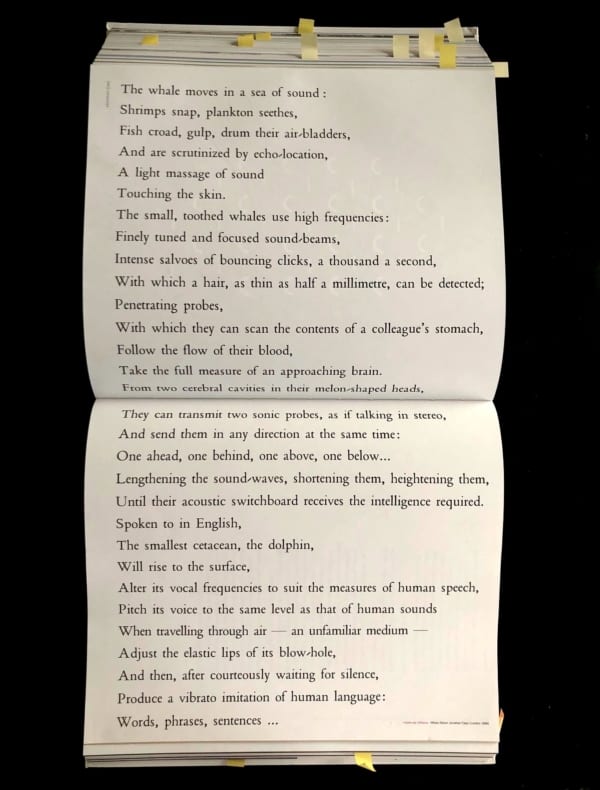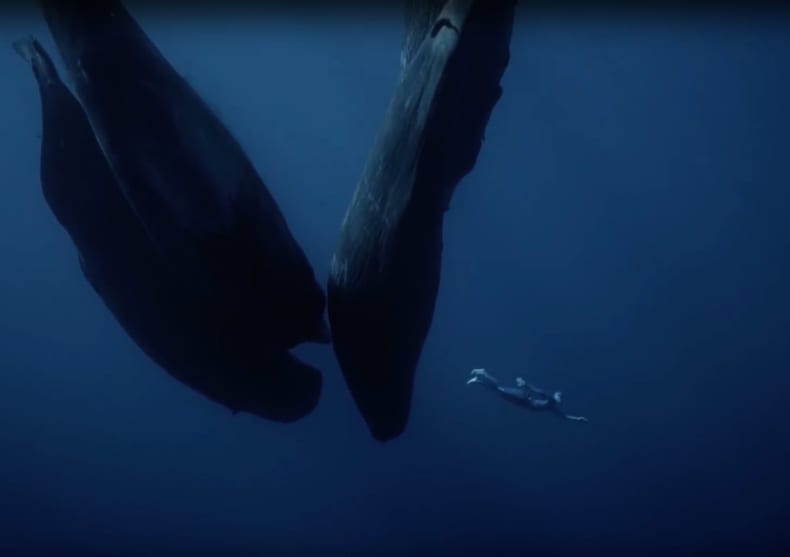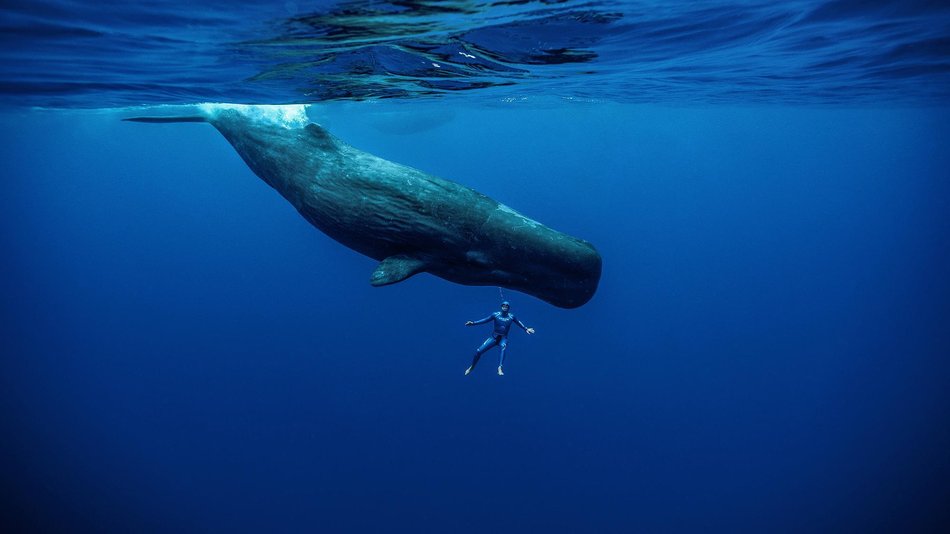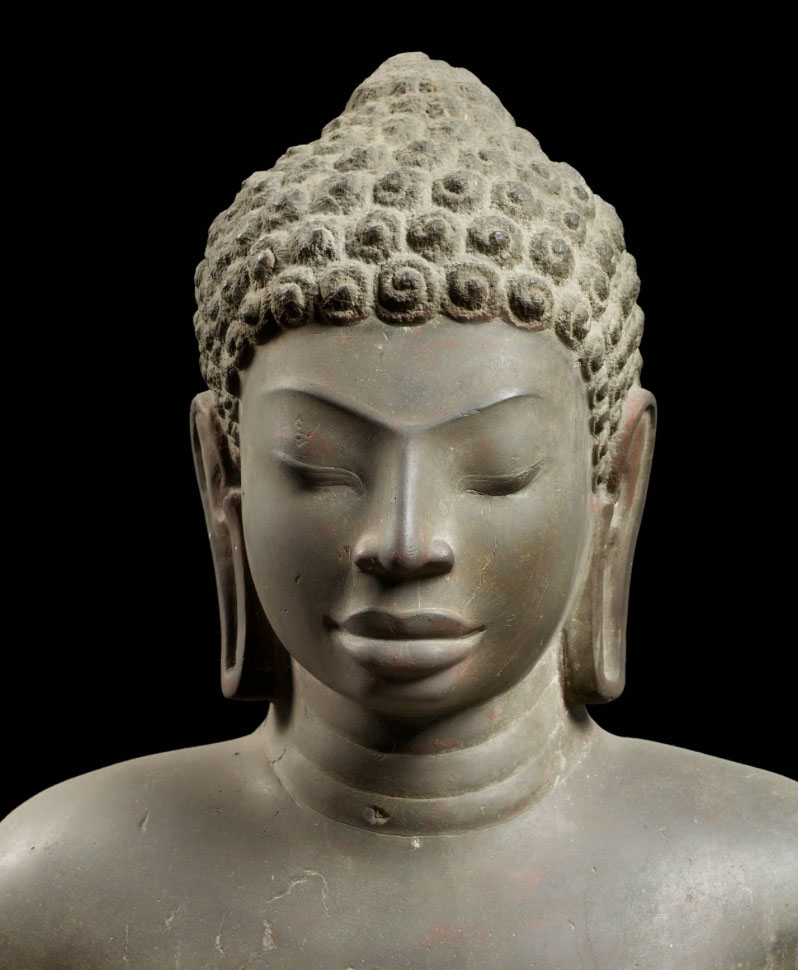One Breath Around the World is champion free diver Guillaume Nery’s transcendent 8-minute voyage through waterscapes around the world (shot be free diver Julie Gautier while holding her breath). For us, the most breathtaking part starts at 7:44, when Nery quietly shares the sea with whales.
The day we viewed it, we opened The Art of Looking Sideways (a permanent fixture in our bathroom library) to this excerpt from Whale Nation, Heathcoate Williams passionate hymm to the science and poetry of whales:

The whale moves in a sea of sound:
shrimps snap, plankton seethes,
fish croak, gulp, drum their air-bladders,
and are scrutinized by echo-location,
a light massage of sound touching the skin.
The small, toothed whales use high frequencies:
Finely tuned and focused sound-beams,
intense salvoes of bouncing
clicks, a thousand a second,
with which a hair, as thin as
half a millimeter, can be detected;
penetrating probes,
with which they can scan
the contents of a colleague’s stomach,
follow the flow of their blood
take the full measure of
an approaching brain.
From two cerebral cavities
in their melon-shaped heads,
they can transmit two sonic probes,
as if talking in stereo,
and send them in any direction
at the same time:
One ahead, one behind, one above, one below…
lengthening the sound-waves,
shortening them, heightening them,
until their acoustic switchboard
receives the intelligence required.
Spoken to in English,
the smallest cetacean, the dolphin,
will rise to the surface,
alter its vocal frequencies
to suit the measures of human speech,
pitch its voice to the same level
as that of human sounds
when traveling through air —
an unfamiliar medium —
adjust the elastic lips of its blow-hole,
and then, after courteously waiting
for silence,
produce a vibrato imitation
of human language:
Words, phrases, sentences…

Pure wonder.





Whales Weep Not, by D.H. Lawrence.
https://www.poemhunter.com/poem/willy-wet-leg/#content
Not the greatest of Lawrence’s poems, but filled with magnificent imagery.